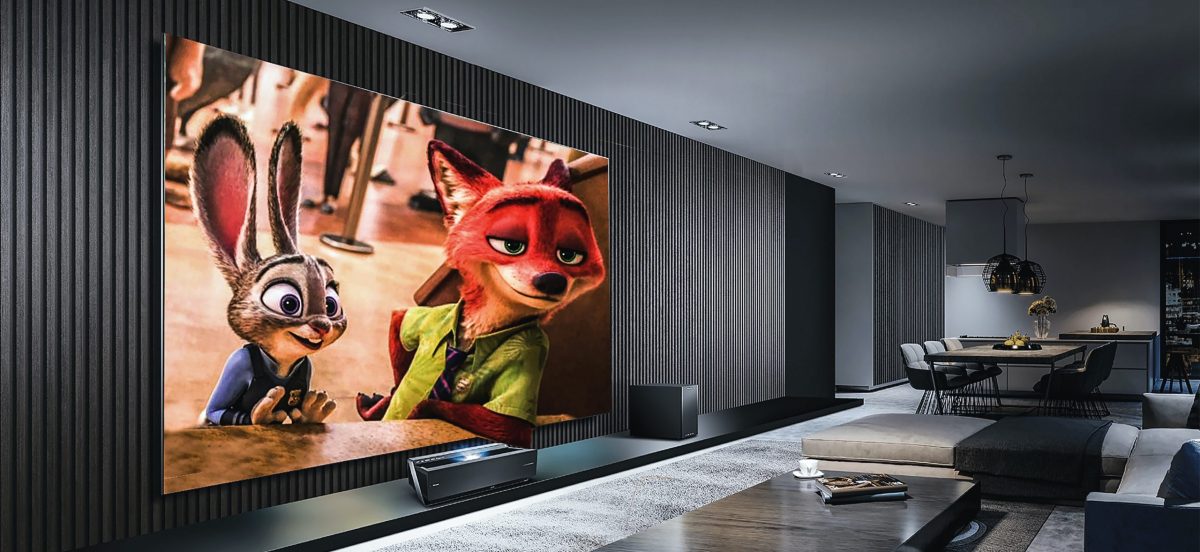You just learned that using an HDMI extender, sometimes called a “Balun,” is the most affordable way to send HDMI video and audio to distant locations. Now that you’re looking online for the best extender, a wireless HDMI extender catches your eye. That seems fascinating.
What is a wireless HDMI extender?
A wireless HDMI extender is to transmit HD video and audio from your source device, such as a cable box, Blue-Ray player, or laptop, to a TV, monitor, or projector, wirelessly.
While a traditional HDMI extender requires an Ethernet cable or coaxial cable to transmit and receive data, a wireless HDMI extender makes advantage of the frequency waves all around us. Similar to how WiFi signals are provided by routers for our computers to connect wirelessly to other computers and servers. Consider your laptop as the receiver and your router as the transmitter. You utilize WiFi to communicate between these instead of an Ethernet wire connection. Wireless HDMI is the same. Instead of using an Ethernet cable, a wireless connection is utilized to connect a transmitter and receiver.
How to set up a wireless HDMI extender?
A transmitter, receiver, and IR extension cables are frequently included in a wireless HDMI extender kit. Simply connect the transmitter and receiver using HDMI cables to your source device and display, respectively, and presto! The two devices may immediately begin communicating with one another since you simply established a wireless connection. Is a wireless HDMI extender necessary? Let’s examine the benefits and drawbacks.
Benefits
- Elimination of cable clutter. Cables create an unsightly and potentially hazardous environment. The wires might cause you to slip and fall, and they don’t exactly go well with your baseboards.
- Simplicity in setup and adjustment. Simply connect your display to the receiver and media device to the transmitter, then switch on all devices. There is no need to weave a lengthy Ethernet connection through, around, over, and under obstacles. Would you like to switch the receiver’s display? Do it without having to lug a cumbersome Ethernet cord around.
- Flexibility in placement. The best versatility is offered by wireless HDMI extenders when it comes to positioning your source device and display. While keeping your source device in a safe place, you may avoid wired solutions that limit you to specific locations where cables are available. Wireless HDMI can expand video and audio to difficult-to-reach places where drilling through walls and running cables through them is impractical. By improving the positioning of your display, you may improve the viewing experience for audiences at a presentation, sermon, demo station, etc.
- Save resources and time. Save money and time by avoiding the need to establish a complicated and expensive wiring infrastructure. The best part is that you can move devices or displays without ever having to reinstall cables. The transmitter and receiver can be moved to the wanted places within minutes.
- No WiFi required. It’s a widespread misperception that a wireless HDMI system needs a WiFi network to function. As previously said, it’s not true, thus you don’t need to be concerned about bandwidth use on your network or the internet going down or losing signal.
Drawbacks
- Minor latency. Most models have a minor delay ranging from 1ms to 500ms when compared to traditional cable HDMI extenders, hence gaming is not advised. This delay, however, is barely perceptible to the human eye.
- Reliability. More variables affect the stability of your wireless HDMI connection than they would with a traditional HDMI extender. With wireless HDMI extenders, external influences might have a greater impact on signal quality and loss. This is because certain structural features of a building or residence might make it difficult for signal to get through and cause signal frequency interference. However, high-quality wireless HDMI extenders are better able to get over these issues.
- Pricing. It has both pros and cons. Although wireless HDMI extenders are normally more expensive than traditional extenders, they usually cost less overall. Due to the benefits mentioned above, it can be an investment. It’s up to you to decide whether the benefits outweigh the value of a wired solution.
If you’re looking for a high quality & cost-effective wireless HDMI extender, AV Access HDW100 is definitely the best choice for you. It can wirelessly extend 1080P full HD HDMI signal up to 200m/656ft in an open field, and 10m-50m (32ft-165ft) through an interior drywall. With its long transmission range, low latency, plug-n-play feature and exquisite design, HDW100 is ideal for both home and business applications.
More Resources
You may be also interested:
Benefits of Using a Wireless HDMI Extender in Home Theater Application
How to Choose the Right Wireless HDMI Extender for Your Home Theater Setup?
About AV Access
AV Access is an experienced manufacturer that produces quality HDMI extenders, KVM extenders, wireless presentation systems, etc. and we also offer AV over IP solutions for scalable uses. These products — HDBaseT extender, and 4K HDMI extender — are among our best-sellers.
Are you a newbie? AV Access blog helps beginners to get on board easily (visit and learn about KVM extenders, USB extenders, and more).
Original Copy: https://www.avaccess.com/blogs/guides/benefits-and-drawbacks-of-wireless-hdmi-extenders/


